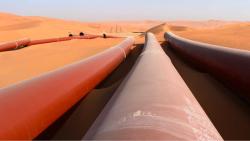
OR WAIT null SECS
© 2024 MJH Life Sciences™ and Turbomachinery Magazine. All rights reserved.
Quantifying the proven benefits of water washing of gas turbines
Below are excerpts from a paper titled, ‘On-line compressor cascade washing for gas turbine performance investigation’ presented at the ASME/IGTI conference in 2011 in Vancouver, Canada.
Uyioghosa Igie, Pericles Pilidis, Dimitrios Fouflias, Ken Ramsden and Paul Lambart
Online compressor washing for industrial gas turbine has been known to mitigate the effects of output and efficiency degradation due to compressor fouling. In a first, online washing was applied on a compressor cascade and the characteristics then related to a three-dimensional axial flow compressor.
The overall performance of a 226MW engine model for the different cases of a clean, fouled and washed engine was obtained. Investigating the effects of fouling on the clean engine exposed to blade roughness of 102 microns caused 8.7% reduction in power at design point. This is equivalent typically to 12 months degradation in fouling conditions. Decreases in mass flow, compressor efficiency, pressure ratio and unattainable design point speed were also observed. A maximum recovery of 50 percent of the lost power is obtained after applying washing cycles of 10mins. Similarly, a recovery of all the key parameters is achieved.
Necessary for many site conditions
The occurrence of particulate fouling of the compressor in heavy duty and aero-derivative gas turbine engines has brought about the desirability of compressor washing. Such a measure is of growing interest due to increasing demand for power generation in often remote areas of Alaska, Athabasca, the Niger Delta and the North Sea.
Heavy duty engines are widely used for electric power generation and the aero-derivative engines have found application in pumping for oil and gas transmission pipelines, which include gas pressure boosting at variable distances along the network. The application also extends to off-shore and naval propulsion where the deposition of salt particles on the compressor may be prevalent. This arises from sea salt water evaporation.
More specifically, compressor fouling is the deposition and accretion of air-borne particles on compressor blades. This leads to an alteration in the aerodynamic shape of the compressor blade and increases the surface roughness that results in a reduction of the effective blade-to-blade pitch distance. The consequence of this is a reduced mass flow and pressure ratio that reduces power output and thermal efficiency.
The philosophy behind on-line compressor washing is that it is a proactive strategy to eradicate the build up of particles on the compressor blades, thereby maintaining performance close to optimum through regular washing.
Other major advantages of this method as opposed to the off-line washing, is that it is applicable to full and part-load real time operations and ensures that the stipulated major overhaul interval is maintained, avoiding early shut-downs. These features make it a viable economic approach, as well as a favorable technical performance objective.
The front stages of the compressor are found to be most fouled and on-line compressor washing is known to be more effective in these early stages. It is nevertheless worthy of note from this study that online compressor cleaning
· improves the power output and consequently thermal efficiency of the gas turbine engine
· ensures a safer operation away from the surge line with good utilization of shaft speed leading to an enhanced mass flow and pressure ratio.
This investigation points out two key outcomes of on-line washing, which are; retarding the reduction in performance due to fouling and enhancing power loss recovery. The major advantage lies in the proactive and preventive loss of power which can be obtained by an early implementation of a regular wash. In an ideal case, it would be from the onset of engine commissioning.



